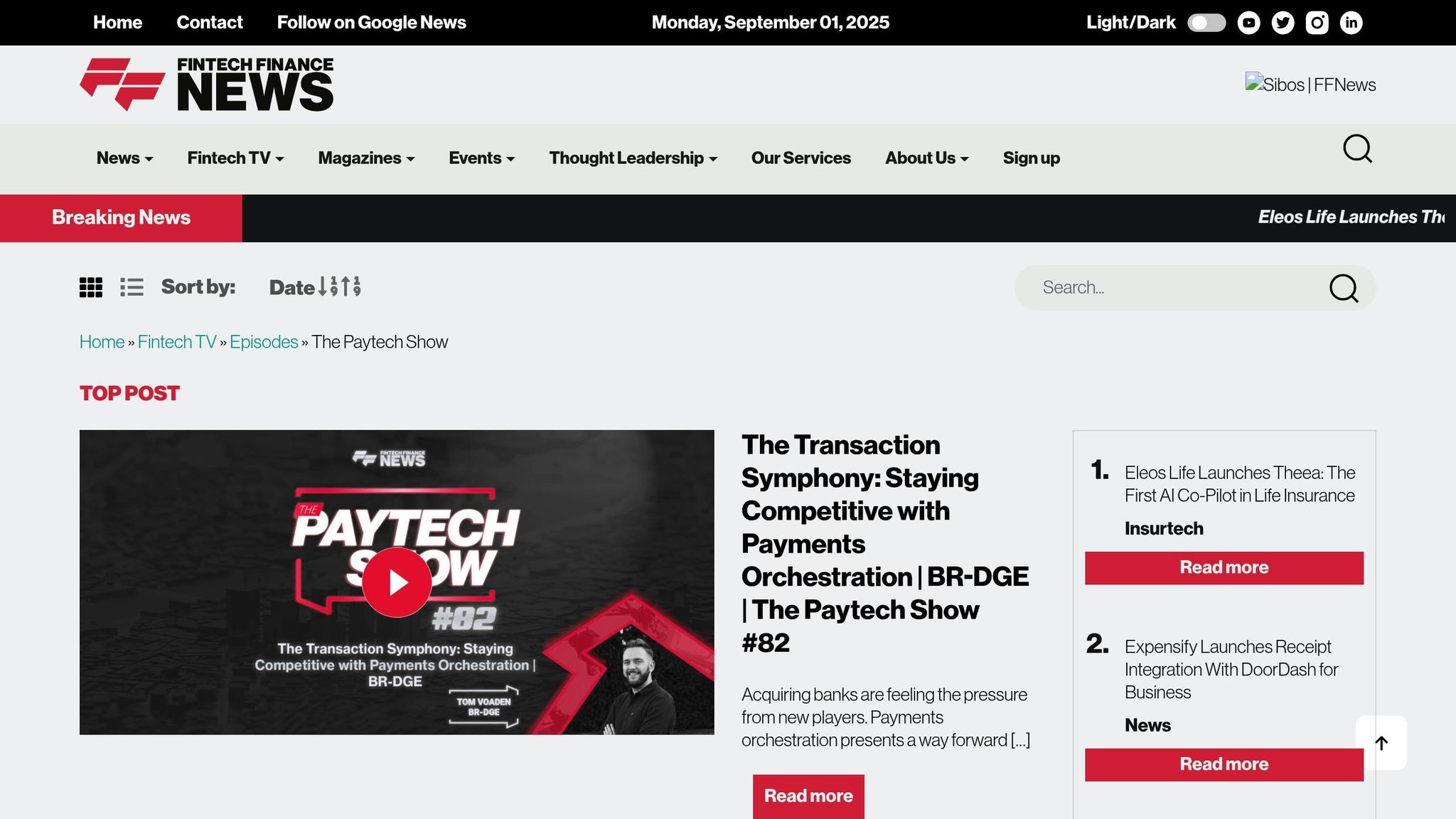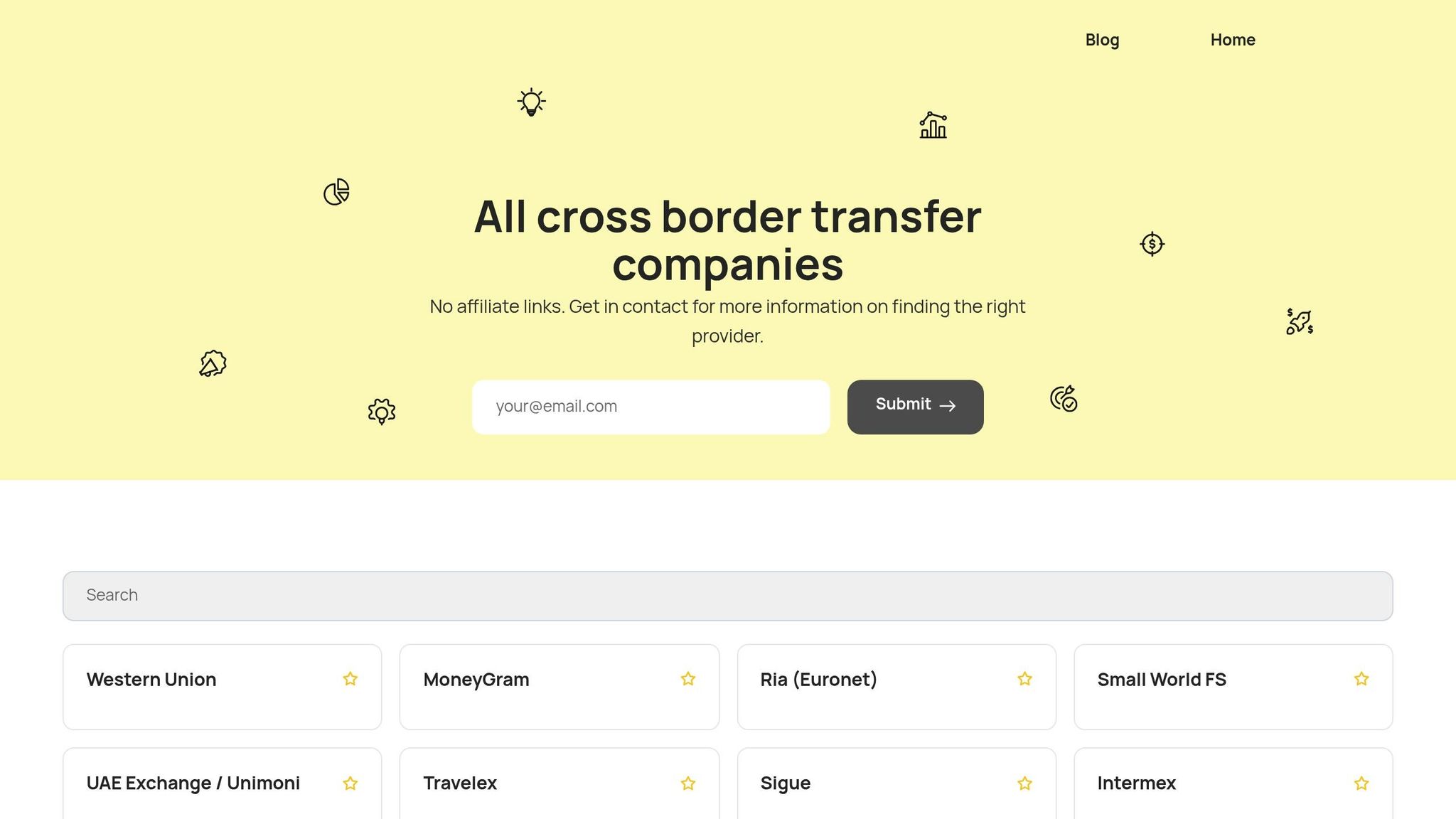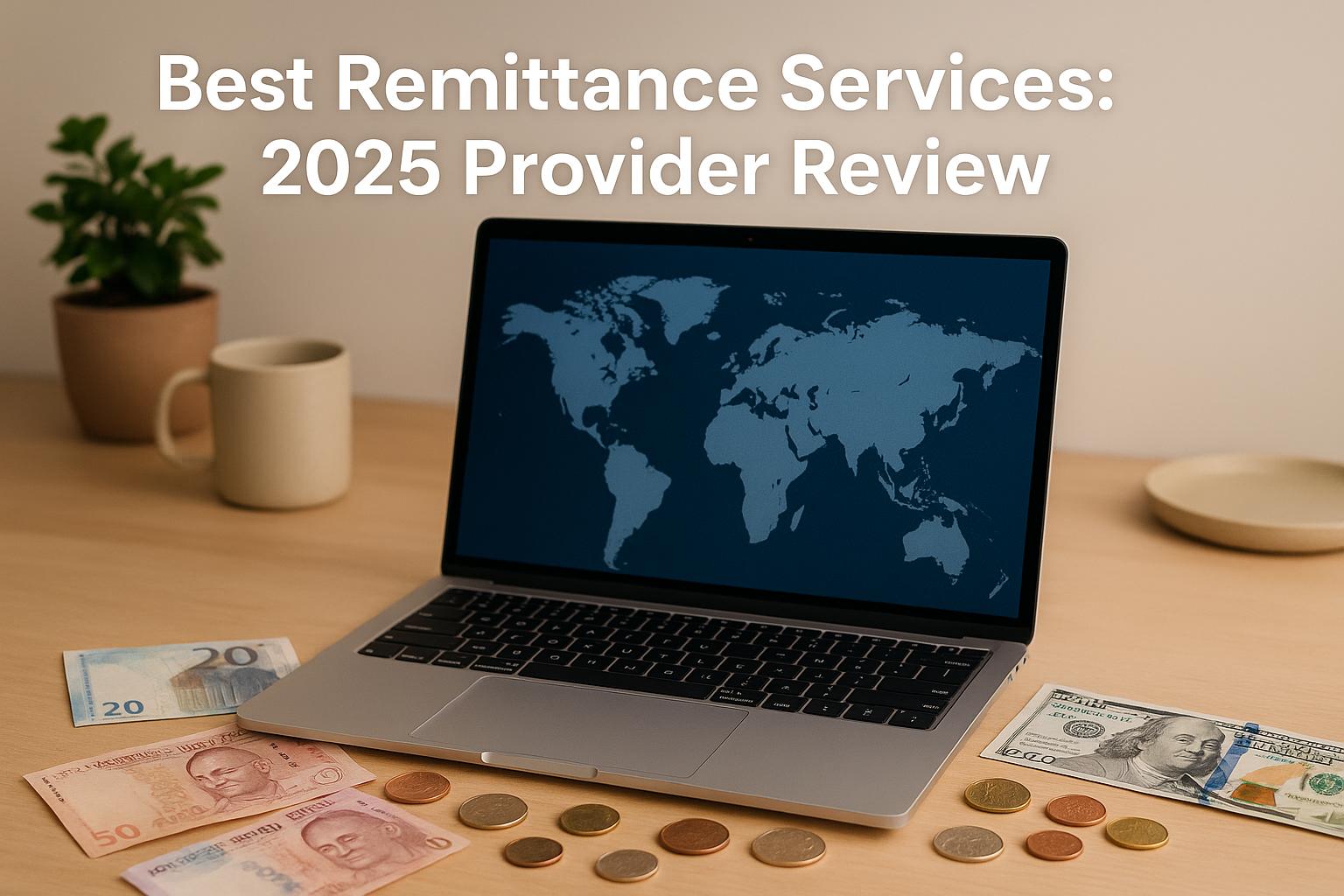Cross-border clearing ensures goods and payments move across international borders efficiently. It involves validating documents, calculating duties, and processing payments. Speed is critical because delays can hurt cash flow, disrupt operations, and strain supplier relationships. Here's what you need to know:
-
Process Breakdown:
- Submit accurate documentation (e.g., invoices, bills of lading).
- Pass compliance checks (duties, taxes, and regulations).
- Finalize settlement (release goods or payments).
- Why Speed Matters: Faster clearing improves cash flow, avoids penalties, and reduces currency risks. Delays can lead to higher costs, lost business, and strained relationships.
-
How to Improve Speed:
- Ensure documentation is complete and accurate.
- Use pre-clearance programs for faster processing.
- Partner with efficient providers offering automation and real-time tracking.
The Paytech Show 6.03 by FF News: Cross-Border Payments in North America

Main Steps in the Cross-Border Clearing Process
This section breaks down the key steps involved in cross-border clearing. Knowing these stages helps businesses pinpoint where delays often happen and how to tackle them effectively.
Inspection and Documentation
The process kicks off with inspection and documentation submission. For physical goods, customs officials inspect shipments to confirm that their contents align with the declared information. In the case of financial transactions, banks and payment processors review transaction details to ensure compliance with anti-money laundering (AML) and know-your-customer (KYC) regulations.
Documentation requirements depend on the type of transaction and the destination country. For shipping goods, essential paperwork includes commercial invoices, packing lists, bills of lading, and certificates of origin. Each document must meet the receiving country's specific formatting standards. For example, a U.S. export invoice must feature the exporter's tax ID, detailed product descriptions, and weight listed in kilograms.
Financial transactions come with their own documentation needs. Wire transfers generally require beneficiary bank details, purpose codes explaining the transaction's intent, and supporting documents like invoices or contracts. Transactions exceeding certain thresholds - commonly $10,000 in the U.S. - may trigger additional verification steps, such as enhanced due diligence.
Getting the details right at this stage is critical. A small error, like an incorrect HS code, can lead to misclassified goods, incorrect duty calculations, or even penalties. Similarly, incomplete payment instructions can result in banks rejecting transactions outright.
Once documentation is verified, the process moves on to calculating duties, taxes, and fees.
Duty, Tax, and Fee Calculations
After the documentation is approved, authorities calculate the applicable duties, taxes, and fees. This step is often where delays occur, as it involves complex calculations based on various factors like product classification, country of origin, trade agreements, and current tax rates.
Customs officials use the declared value and HS classification of goods to determine import duties. If the declared value appears unusually low compared to market prices, customs may challenge it, request additional documentation, or conduct further research. This can stretch clearing times from days to weeks.
Preferential treatment under trade agreements can reduce or eliminate duties, but this requires proof of origin to qualify.
For financial transactions, fees and compliance with currency controls are assessed. Some countries impose taxes on foreign exchange transactions or require permits for specific payment types.
Processing fees add another layer of complexity. These can include customs processing fees, inspection charges, storage costs for delayed shipments, and banking fees for international transfers. Goods held in customs warehouses often incur daily fees, making a quick process essential for keeping costs in check.
Release and Final Settlement
Once duties and fees are calculated, the process moves to the release and final settlement stage. For goods, this means customs releases the shipment for delivery to its final destination. For payments, banks process the transfer, making funds available to the recipient.
Even at this stage, challenges can arise. Banks might hold funds for additional review, especially for first-time recipients or transactions involving high-risk countries. Same-day settlement is possible for payments processed early in the business day, but those submitted after cutoff times - usually 2:00 PM Eastern Time for U.S. banks - may not settle until the next business day.
Currency conversion is another factor in this stage. Timing can impact the final amount received, making speed crucial not just for operations but also for financial predictability.
Understanding these steps highlights why preparation and selecting the right service providers are so important. Each stage builds on the one before it, meaning that early mistakes can snowball into longer delays later in the process.
What Affects Clearing Speed
How fast your cross-border transactions clear depends on several key factors. By understanding these elements, you can take steps to make the process smoother and faster. Each one plays a role in determining how quickly your transaction is completed.
Accuracy and Completeness of Documentation
Errors or missing details in your paperwork can throw a wrench in the clearing process. For instance, incomplete invoices or incorrect classification codes often lead to extra reviews, which slow things down. Double-checking all documentation, from invoice details to required codes, is a simple way to avoid unnecessary delays.
Regulatory and Compliance Checks
Regulations like AML (Anti-Money Laundering) and KYC (Know Your Customer) protocols are essential for security but can also be time-consuming. If these checks aren’t handled efficiently, they can significantly delay processing. Plus, with regulations constantly changing, staying compliant often requires customized approaches, which can add to the processing time.
Use of Technology and Automation
Leveraging technology can speed up the clearing process. Tools like electronic submission systems and automated risk assessments can make verification faster and more efficient. However, the extent of these benefits depends on how much technology has been integrated into the operations and how regulations impact its use.
sbb-itb-165eed9
How to Speed Up Cross-Border Clearing
Now that we've broken down the common causes of delays in cross-border clearing, let’s explore some practical steps to help you move things along more efficiently. These strategies emphasize being proactive, so you can tackle potential issues before they even arise.
Prepare and Verify Documentation Ahead of Time
A surefire way to speed up the clearing process is by ensuring all your documentation is accurate and complete before submission.
Start by creating a customized checklist tailored to your specific trade routes. Include essential documents like commercial invoices, packing lists, certificates of origin, and any necessary permits. Double-check that product descriptions are consistent across all paperwork, quantities align, and classification codes are correct.
Pay attention to currency conversions - use the exchange rates from the transaction date to avoid discrepancies. Also, confirm whether original signatures are needed, as some jurisdictions may not accept digital ones.
Keep your templates up to date as regulations evolve. Many businesses underestimate how often rules change, but staying current can make a big difference. With solid documentation in place, pre-clearance programs can work even more effectively.
Leverage Pre-Clearance Programs
Pre-clearance programs can significantly cut down processing times by allowing you to address potential issues before the transaction enters the clearing phase.
Many customs authorities and financial institutions offer trusted trader programs for companies with strong compliance records. While these programs require an application process and ongoing monitoring, they can save a lot of time once you’re approved.
Another tool to consider is Electronic Data Interchange (EDI) systems, which let you submit documentation digitally, often 24-48 hours ahead of time. This early submission gives clearing agents a chance to review your paperwork and flag any issues without delaying your transaction.
Some programs also offer risk assessment pre-screening, where your transaction is evaluated against risk criteria before processing begins. Transactions deemed low-risk can often clear faster, as they avoid the need for manual reviews.
Partner with the Right Payment or Logistics Providers
Even with solid documentation and pre-clearance in place, the providers you choose can make or break your clearing speed. Opt for partners who excel at navigating cross-border processes.
Look for providers that offer real-time tracking throughout the clearing process. This level of transparency allows you to address problems immediately, rather than discovering them late in the game. Providers with strong relationships with customs authorities and regulators often handle the process more smoothly.
Specialization matters, too. A provider with expertise in specific trade corridors - like US-Mexico manufacturing, for instance - will likely process transactions in that corridor faster than a generalist provider.
Technology integration is another key factor. Providers that use automated systems for reviewing documentation, checking compliance, and updating transaction statuses tend to be faster and more efficient than those relying on manual workflows.
For help finding the right fit, Cross Border Payments Companies offers a detailed directory of payment providers. You can compare options based on API availability, primary trade corridors, and specific use cases, making it easier to identify providers that align with your speed and efficiency goals. This can be a game-changer for streamlining your cross-border transactions.
How Cross Border Payments Companies Helps with Clearing Speed

After outlining practical ways to speed up cross-border clearing, the next step is identifying providers that deliver the fastest services. While strategies like streamlining document preparation and pre-clearance are crucial, partnering with the right provider can make a significant difference - sometimes reducing clearing times from days to mere minutes. Cross Border Payments Companies offers a powerful directory to help you achieve that level of efficiency.
Access to a Detailed Provider Directory
Cross Border Payments Companies provides a robust directory of cross-border payment providers. Each provider profile includes essential details like processing capabilities, supported currencies, and geographic reach. This makes it easier to pinpoint providers that align with your specific trade routes - whether you're managing US–Europe business payments or handling Asia-Pacific remittances.
The platform also highlights critical factors that impact clearing speed, such as 24/7 processing, weekend settlements, and expedited handling for urgent transactions. By identifying providers with these capabilities, you can avoid delays caused by limited operating hours or manual processes. This comprehensive breakdown allows you to make informed comparisons between providers.
Understanding Provider Strengths and Capabilities
The directory simplifies comparing providers by spotlighting their strengths. Features like advanced automation, robust APIs, real-time updates, and automated compliance are clearly outlined, helping you choose providers that minimize manual intervention and speed up transaction processing.
Additionally, the directory sheds light on each provider's technological infrastructure, giving you a clearer picture of how their systems contribute to faster clearing times.
Finding Faster Transaction Solutions
Cross Border Payments Companies goes a step further by tailoring recommendations based on your specific needs and transaction requirements. Providers are categorized by their typical processing speeds, helping you quickly identify those that can meet tight deadlines.
For example, 89% of payments on the Swift network reach destination banks within an hour, with nearly half being credited in under five minutes. The platform also highlights providers offering premium services like same-day settlements, priority queues, or dedicated transaction channels, enabling you to weigh the costs and benefits of these expedited options.
Whether you're managing urgent business payments, fast person-to-person transfers, or high-volume batch processing, the directory helps you find providers with proven expertise in your use case. This targeted approach eliminates guesswork, ensuring you can secure faster clearing speeds right from the start.
Conclusion
Speeding up cross-border clearing can transform your cash flow, enhance customer satisfaction, and give you a competitive edge on a global scale. By understanding the clearing process in detail, you can identify bottlenecks and take steps to improve efficiency.
Main Takeaways
Here’s a quick recap of the key points: The speed of cross-border transactions hinges on three main factors - accurate documentation, adherence to regulatory requirements, and the adoption of modern technology. Ensuring your documentation is precise and verified helps avoid unnecessary delays, while automation can significantly cut down processing times. Pre-clearance programs and working with providers equipped with advanced technology further streamline the process.
Technology is especially critical in accelerating clearing times. Tools like automated compliance checks, real-time tracking, and API connectivity can make a big difference compared to traditional, manual approaches. Providers with modern infrastructure often deliver faster results, so their technology investments are worth noting.
Next Steps for Businesses
To put these insights into action, start by evaluating your payment providers against these speed-related factors. Seek out providers that offer automated systems, 24/7 operations, and a proven track record in your primary trade regions.
For tailored solutions, platforms like Cross Border Payments Companies offer a comprehensive directory of providers. Their detailed breakdown of processing capabilities, technology, and speed-focused features makes it easier to find a provider that aligns with your timelines. Whether you’re looking for rapid settlements for urgent payments or efficient batch processing for routine transactions, this resource connects you with the right options.
Take the time to refine your documentation processes, consider pre-clearance opportunities, and use tools like the provider directory to improve transaction speed. These small but strategic adjustments can deliver big advantages as your international business continues to expand.
FAQs
What are common documentation errors that delay cross-border clearing, and how can they be prevented?
Delays in cross-border clearing frequently arise from errors or omissions in documentation. Typical mistakes include incomplete or inaccurate product descriptions, incorrect declared values, or mistakes in registration details like EORI or VAT numbers. Such issues can result in customs delays or, in some cases, the outright rejection of shipments.
To reduce the chances of these problems, make sure all forms are thoroughly completed and carefully verify key details such as registration numbers and declared values. Using standardized templates can simplify the process, and seeking guidance from compliance experts can further reduce errors. Additionally, implementing clear internal procedures for reviewing documentation can help streamline operations and cut down on delays.
What are pre-clearance programs, and how do they make cross-border transactions faster?
Pre-clearance programs let customs and border officials handle inspections and clearance procedures at foreign airports or locations before travelers even set foot in the United States. This means you're screened and cleared ahead of time, cutting down on the need for lengthy checks once you arrive.
By taking part in these programs, you can breeze through entry with shorter wait times and a more seamless travel experience. Plus, pre-clearance adds an extra layer of security by resolving potential concerns before your journey begins.
How does technology speed up cross-border clearing, and what tools can businesses use to improve transaction times?
Technology has revolutionized cross-border clearing by streamlining processes, improving clarity, and enabling quicker communication between systems. Tools like blockchain, automated compliance solutions, and real-time payment tracking make it possible for businesses to handle transactions more effectively while cutting down on delays.
To stay ahead, businesses should look for tools that include features like real-time exchange rate updates, automated regulatory compliance checks, and end-to-end payment tracking. Incorporating fast payment systems that work across borders can also reduce reliance on intermediaries, significantly speeding up transaction times. These advancements pave the way for smoother and almost instant transactions, saving valuable time and boosting overall efficiency.


